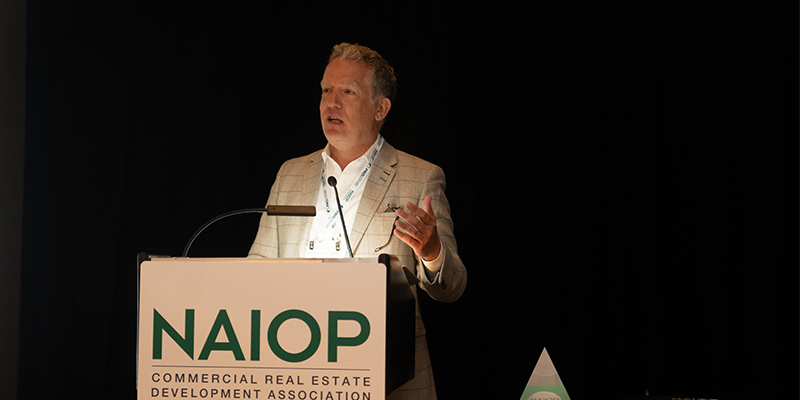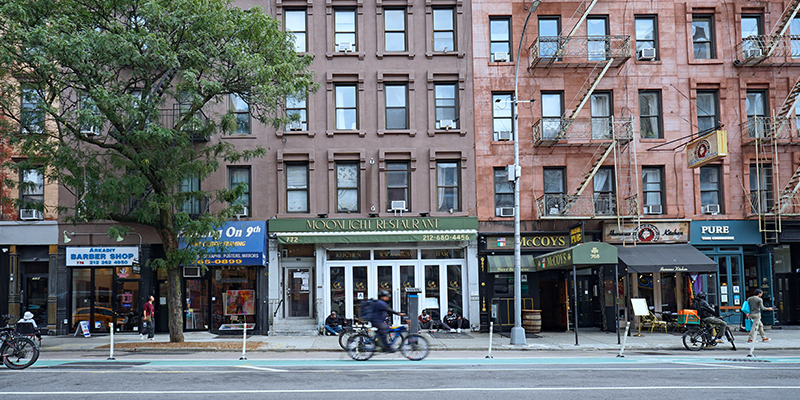As the economy continues to recover from the impact of the pandemic, investors are closely analyzing conditions in the current environment, including rising inflation, geopolitics, increasing interest rates and other factors. At I.CON East: The Industrial Conference, several capital market experts dove into what’s happening now and provided a forecast for the road ahead.
Moderator Gretchen Wilcox, founder, G.S. Wilcox & Co., asked the four panelists several top-of-mind questions during the session.
What are you seeing in individual industrial capital markets and how are investors responding to these changes?
Kevin Welsh, executive managing director at Newmark, stated the Fed’s fund rate increases will continue, but industrial will remain the premier asset class due to low vacancy rates, rent growth and other spectacular fundamentals. He believes cap rates will be under the most pressure in the core, long-term leasing space and there may be some pullback in those areas. At the same time, there will be more growth in value-add investments with shorter-term leases. “The play in my mind is really in the value-add space with 3-5 year leases. You can get your arms around that rent growth,” he said. “Long-term leases are very hard to do when you have this wildly appreciating debt environment.”
Walter Stackler, managing partner at Shelter Rock Capital Group, added that the outlook is much murkier for retail and office. A lot of the capital that historically flowed into those sectors is now flowing into industrial and multifamily. The question is how long that will last.
Considering the historically low industrial vacancy rates, where are the greatest opportunities for capital appreciation and how does one identify new opportunities with a shrinking supply?
Ohad Porat, chief investment officer at Faropoint, responded that his firm is focusing on smaller warehouses that are close to population centers due to the demand for last mile space. Ed Lerum, head of global logistics real estate at Norges Bank Investment Management, added it is important to focus on demand, how consumers are going to consume and how much are they buying online. Consumption is slowing down, mostly a comedown from the online shopping peak during the pandemic.
Amazon’s decision to give up some of its warehouse leases and own space instead is not as much of a headline as one would think it is, according to Lerum. “Amazon has doubled the amount of its warehouse space that they own over the past two years. That sounds big, but it’s only 4% of the total space they occupy.”
Will the bull run on industrial continue, and what do you see happening over the next 12 to 24 months?
Stackler stated that capital flow may begin to outpace the opportunity on the ground. Porat said he is seeing somewhat of a slowdown at the big-picture level in terms of overall earnings and as inventories increase (leading to less demand). However, there is no slowdown on the ground as rent growth is still outpacing analysts’ predictions. Although there might be some increased caution in riskier markets, there is still a lot of capital looking at development.
There are some slight concerns about oversupply, but they are market-specific, according to Lerum. Completions have been down over several quarters and that usually means construction is taking longer than usual, but this is usually limited to supply constrained markets.
Welsh remains optimistic: “If you build it, they will come. Over the last three years in the tri-state area, there’s been 70 million square feet of new construction and it’s all been absorbed. And people are very, very focused on modern infrastructure.”
Are investors looking around at other property types?
According to Stackler, investors are beginning to look at opportunities in retail. Especially if there’s some kind of reuse opportunity in retail or potential for an office conversion. Those are getting some investor interest.
Would you expect to see annual rent bumps being tied to CPI moving forward?
Porat’s firm is shifting most of their leases to CPI or a fixed amount, whichever is the highest. “Especially in the tight markets, landlords have the power right now,” he said. “I can share that our average annual contractual escalations are north of 3.5%. In northern New Jersey right now, 4.5% and 5% is standard. It’s being absorbed in new leases to compensate and leveraging the fact that right now it still is a landlord’s market.”
How are landlords going to handle the fact that New York has a large demand for warehouse but can’t really handle the inventory?
Welsh recommended building multistory warehouses and pointed out that several I.CON attendees know how to handle these complex building types.
Are you seeing anything overseas that is an indicator for what we might expect in the U.S.?
Lerum remarked, “The biggest risk is in Europe – not only an inflation story but a story of supply constraints and a lack of production,” he said. “And that can still filter over to the U.S. There’s a lot of discussion right now in the U.S. about demand easing, which would help lower inflation and help improve the supply chains.”
This post is brought to you by JLL, the social media and conference blog sponsor of NAIOP’s I.CON East 2022. Learn more about JLL at www.us.jll.com or www.jll.ca.









